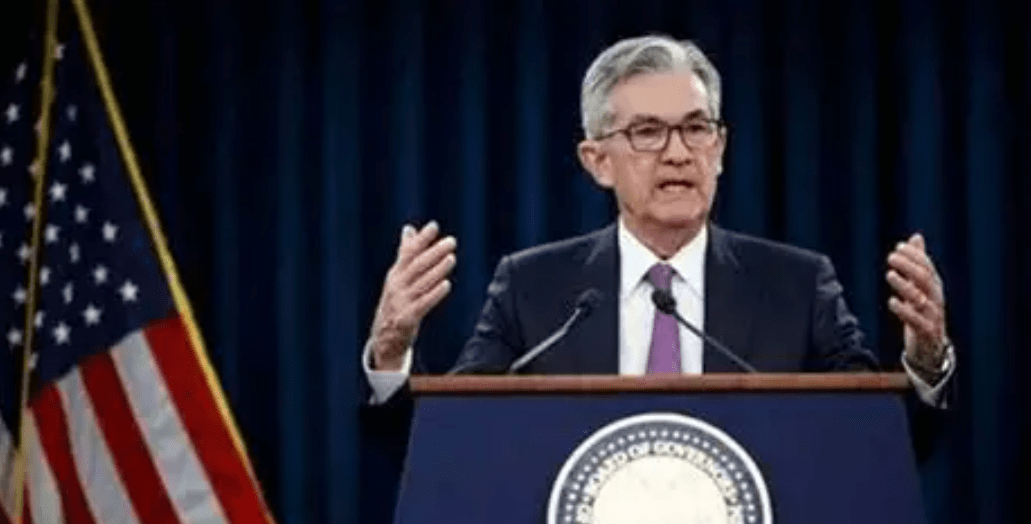In the ever-changing landscape of financial markets, the statements of key figures can trigger significant market tremors, akin to a 'butterfly's wings.' Recently, Nick Timiraos, a renowned journalist known as the 'voice of the Federal Reserve' at the Wall Street Journal, brought forth a major revelation: Federal Reserve Chairman Powell has quietly opened the door for potential rate cuts as early as September. This news has dropped a 'depth charge' in the global financial markets, drawing close attention from all parties.

Did Powell's hints pave the way for a September rate cut?
On Friday local time, Federal Reserve Chairman Powell made a subtly changed statement in a highly anticipated speech, clearly mentioning the potential for a sharp slowdown in the labor market. This signal acts like a traffic light, suggesting a shift in the direction of Federal Reserve monetary policy. According to Powell, if the labor market indeed experiences significant volatility, it could possibly alleviate the current thorny issue of rising costs due to tariffs, which in turn are pushing up inflation. The tariff issue has long loomed over the global economy like the 'Sword of Damocles,' profoundly affecting domestic price levels in the U.S., while the labor market, as a key pillar of economic stability, is inextricably linked to the delicate balance between its fluctuations and inflation, which is a core consideration for the Fed in formulating monetary policy.
Powell's statement is not an isolated event; it is supported by a complex economic backdrop. Recent U.S. economic data show that while the labor market remains generally robust, signs of fatigue are starting to appear, with the pace of new job creation slowing and the unemployment rate quietly rising. At the same time, rising costs due to tariffs are gradually being passed on to consumers, leading to a sustained high consumer price index, putting dual pressure on the lives of ordinary people and business operations. In this context, Powell's hints at rate cuts aim to stimulate economic growth, relieve pressure on the labor market, and stabilize inflation expectations.
Inflation concerns persist, and market expectations are diverging.

However, while Powell is 'opening the floodgates' for rate cuts, he also does not forget to 'douse cold water' on the market, emphasizing ongoing concerns about inflation. It is important to note that U.S. inflation has stubbornly remained above the Fed's 2% target for over four years, becoming a significant obstacle on the path of economic development. Although risks in the labor market provide a rationale for rate cuts, Powell is well aware that if inflation spirals out of control, it will cause immeasurable damage to the economy. Therefore, he carefully chose his words during the speech, attempting to soothe market expectations for loose policies while avoiding triggering panic over potential inflation runaway.
This statement acts as a double-edged sword, eliciting markedly different reactions in the market. On one hand, some investors firmly believe that a rate cut is imminent, adjusting their investment portfolios to flow into interest-sensitive asset areas like the stock and bond markets, hoping to reap rich rewards in a loose monetary policy environment. The stock market responded positively, with major indices showing gains, particularly strong in sectors like technology and consumer goods; the bond market also saw a surge, with Treasury yields dropping significantly and bond prices rising.
On the other hand, many market participants maintain a cautious wait-and-see attitude. They worry that while a rate cut may stimulate the economy in the short term, it could further exacerbate inflationary pressures, especially given the many uncertainties surrounding the current U.S. economy. Should inflation spiral out of control, the Fed may have to resort to more aggressive tightening policies, which would have devastating effects on the economy. As a result, these investors choose to remain inactive, waiting for more economic data and policy signals to clarify the market direction.
What is the market impact? The subsequent trend remains a mystery.

Powell's speech undoubtedly stirred the financial markets, causing severe fluctuations in asset prices. The U.S. dollar index took a heavy hit, experiencing its largest single-day drop since April. This was due to lowered interest rate expectations, which reduced the attractiveness of dollar-denominated assets, prompting investors to sell dollars in favor of other currencies or assets. In contrast, gold prices soared, breaking through key resistance levels. As a traditional safe-haven asset, gold has become the object of investors' pursuit amid increasing market uncertainty and heightened expectations of declining interest rates.
In today's world of global economic integration, adjustments in U.S. monetary policy not only affect domestic markets but also generate widespread spillover effects. Emerging market countries face capital outflows and pressure on currency depreciation, which may impact their stock and bond markets. Meanwhile, developed economies such as Europe and Japan, while having different economic structures than the U.S., also find it difficult to remain unaffected, with interest rate policies and exchange rate trends being influenced to varying degrees.
Looking ahead, the market's focus will shift to the September Federal Reserve meeting. Before that, a series of key economic data, such as employment reports and inflation data, will become important benchmarks for market predictions regarding the Fed's decisions. While Powell's speech has opened the door for a rate cut in September, whether a cut will actually occur and to what extent remains uncertain. Market participants are bracing for the upcoming financial storm, seeking new investment opportunities and directions in a complex and ever-changing market environment.
Disclaimer: The content of this article is for reference only and does not constitute any investment advice. Investors should rationally view cryptocurrency investments based on their own risk tolerance and investment goals and should not blindly follow trends.

